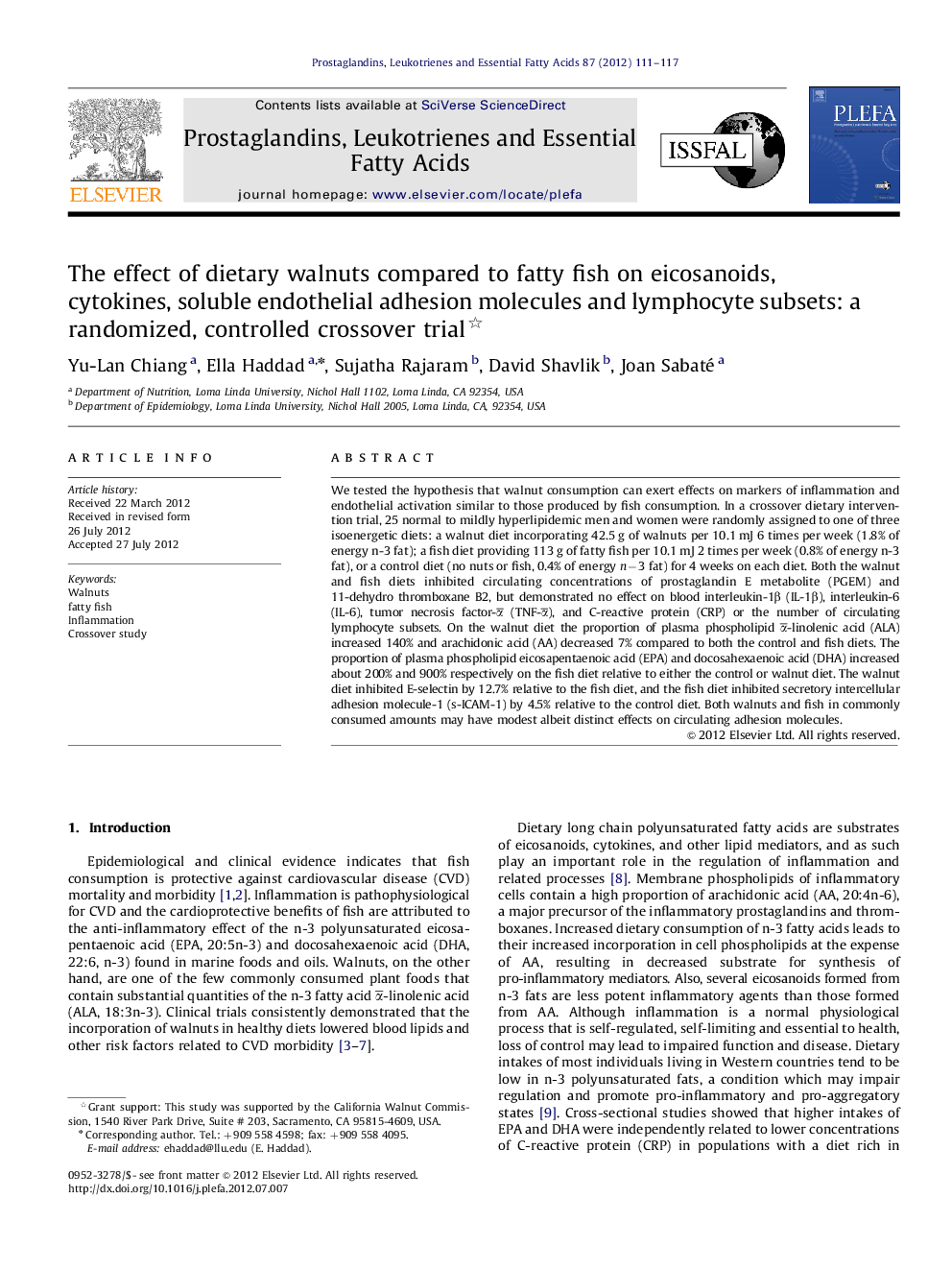| Article ID | Journal | Published Year | Pages | File Type |
|---|---|---|---|---|
| 2777731 | Prostaglandins, Leukotrienes and Essential Fatty Acids (PLEFA) | 2012 | 7 Pages |
We tested the hypothesis that walnut consumption can exert effects on markers of inflammation and endothelial activation similar to those produced by fish consumption. In a crossover dietary intervention trial, 25 normal to mildly hyperlipidemic men and women were randomly assigned to one of three isoenergetic diets: a walnut diet incorporating 42.5 g of walnuts per 10.1 mJ 6 times per week (1.8% of energy n-3 fat); a fish diet providing 113 g of fatty fish per 10.1 mJ 2 times per week (0.8% of energy n-3 fat), or a control diet (no nuts or fish, 0.4% of energy n −3 fat) for 4 weeks on each diet. Both the walnut and fish diets inhibited circulating concentrations of prostaglandin E metabolite (PGEM) and 11-dehydro thromboxane B2, but demonstrated no effect on blood interleukin-1β (IL-1β), interleukin-6 (IL-6), tumor necrosis factor-α¯ (TNF-α¯), and C-reactive protein (CRP) or the number of circulating lymphocyte subsets. On the walnut diet the proportion of plasma phospholipid α¯-linolenic acid (ALA) increased 140% and arachidonic acid (AA) decreased 7% compared to both the control and fish diets. The proportion of plasma phospholipid eicosapentaenoic acid (EPA) and docosahexaenoic acid (DHA) increased about 200% and 900% respectively on the fish diet relative to either the control or walnut diet. The walnut diet inhibited E-selectin by 12.7% relative to the fish diet, and the fish diet inhibited secretory intercellular adhesion molecule-1 (s-ICAM-1) by 4.5% relative to the control diet. Both walnuts and fish in commonly consumed amounts may have modest albeit distinct effects on circulating adhesion molecules.
